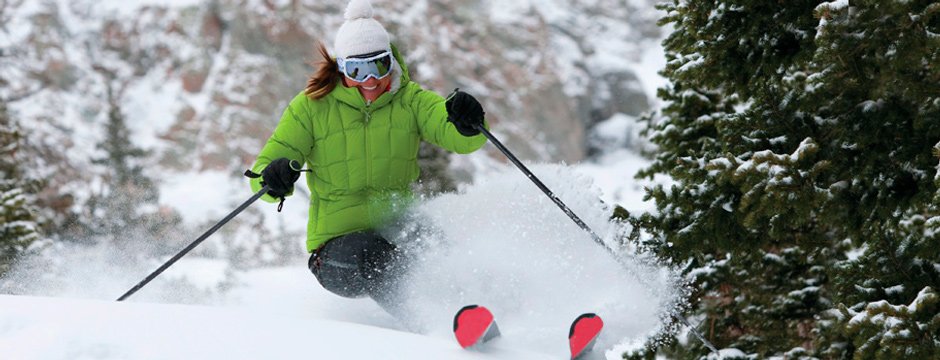Top Tips to master your ski and snowboard lessons

While skiing and snowboarding may be two of the most recognised winter sports around the world, they can be very daunting when trying them out for the first time. When in this situation, falling over is certainly going to be a common theme for the first couple of days, but after a few lessons you will hopefully be descending the pistes in style. Because the team here at Ski Olympic want nothing more than for you to succeed, here are some of the top tips we recommend for you to bear in mind in preparation and during your first lessons.
Skiing

If you are skiing for the first time during a skiing trip to Courchevel, it’s likely that you will have never experienced having two boards strapped to your feet – this is perhaps why so many people fall over after just a few seconds. The general consensus around skiing is that while it is difficult to pick up initially, it’s easy to develop your skills after mastering the basics.
Find out your size
Working out the correct size skis for your needs is of paramount importance if you want to get the best experience from your holiday. The width of the ski will depend on the type of ski you have, and if you’re hiring your gear the staff will advise you on this. The most important factor is the length and the general rule is that the tip should measure up somewhere between your chin and the top of your head. The team at your ski hire venue will offer guidance, but it will all depend how you feel when on the mountain and only then will you know if the size is wrong.
Bend your knees and lean slightly forward
If you have your skis and boots then it’s time to get strapped in and descent the piste, albeit very slowly and unbalanced. In order to avoid a face full of snow you need to learn the basic skiing stance. Bend your knees until your shins are just in front of your boots and lean slightly forward and keep your hands in line with your hips.
Learn the snow plough
The snow plough is the bread and butter of learning how to ski, it is a stance that will keep you safe on the slopes and stop you from moving anywhere. To do this, point your feet towards each other and put your weight onto the inside of your skis. You should make sure that your skis do not cross as this could lead to a loss of balance and you falling over – which nobody enjoys! By taking your weight off the inside of your skis slightly you will start to move, and by applying your weight onto one ski you will even start turning left and right.
Don’t get too cocky
If the snow plough is working out well for you during your winter sports holiday in La Rosiere, it’s understandable that you will want to start developing your skills and adding speed to your skiing. This is certainly what you should be doing but our advice is to keep it steady and don’t put yourself in danger. The reality is that skiing is a very dangerous sport and a lapse in concentration at a very high speed could result in a serious injury.
Always take a helmet
While on the topic of safety, a helmet is recommended for all mountain users because of rocks and other hazards that are lying under thick snow. Although you hope never to have to rely on your helmet, skiing with one is always better than skiing without.
Snowboarding

Find out your size
Exactly the same as skiing, getting the right size snowboard is key to helping you learn the slopes in the least amount of time. While weight should be considered in certain cases, the usual rule is that if the top fits your chin then it’s a perfect fit.
Goofy or Regular?
If you’re asked in your lesson whether you are goofy or regular, those who are new to riding could be offended by such a question. It actually refers to your stance, the way you stand on the board. Goofy refers to those who snowboard with their right foot forward, while regular with their left foot. This will be a good thing to know for yourself, otherwise you start learning in switch and think your skills are a lot worse than they actually are. A good way to work this out is to jump up some steps: the first foot that leaves the ground will be your front foot.
Wear wrist guards
Falling on a snowboard is very different to skis, particularly as they way you are strapped in means that you will either fall face or head first. In the case of the former, the instinctive reaction of the human body is to put your hands out to brace the impact. However, this could severely damage the wrists and hands if landing onto hard packed snow and it’s for this reason that we strongly recommend buying wrist guards for beginner boarders. With around 95,000 wrist fractures occurring from snowboarding around the world every year, it’s a clear problem on the mountain.
Image Credit: kcxd (Flickr.com)
